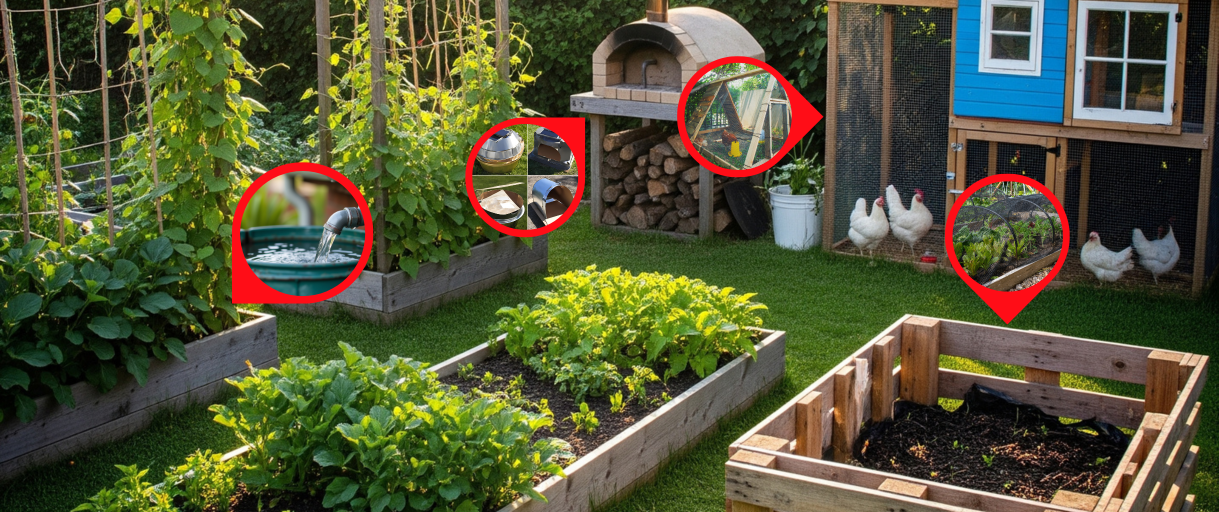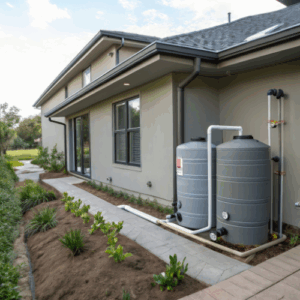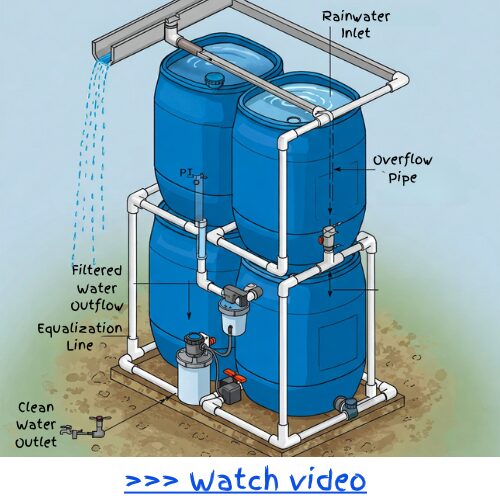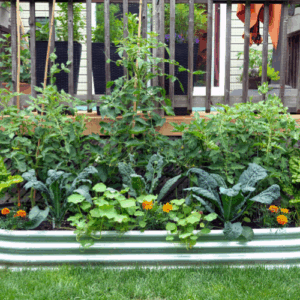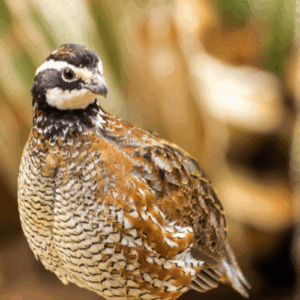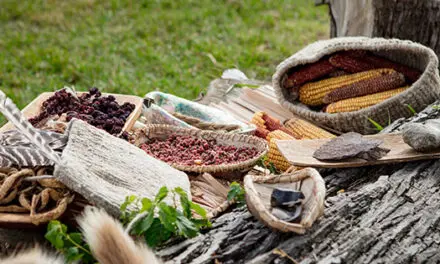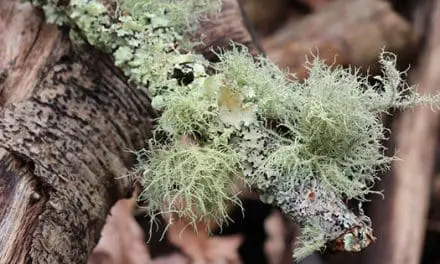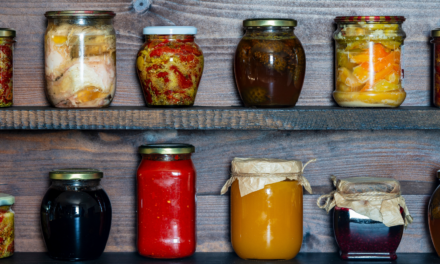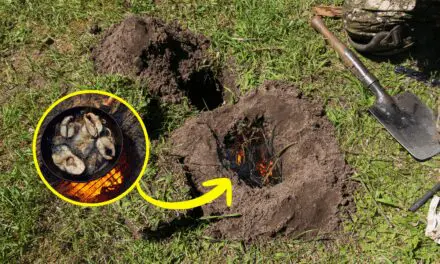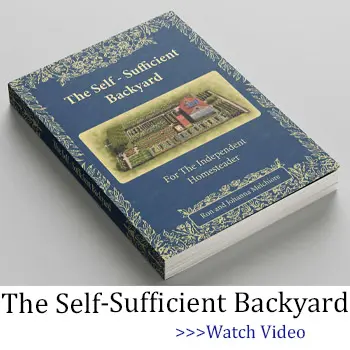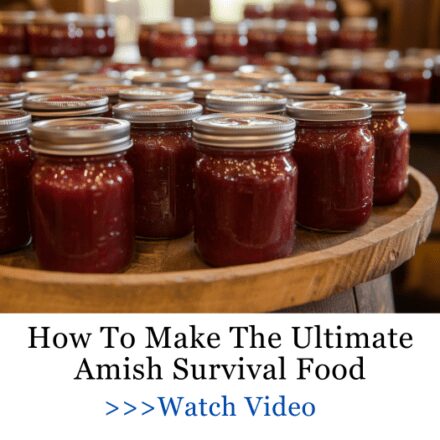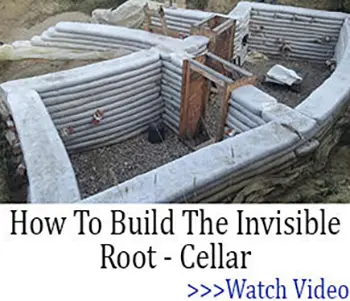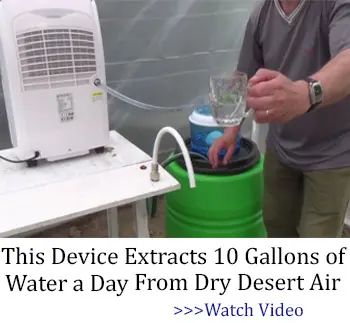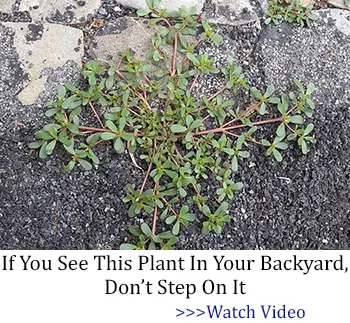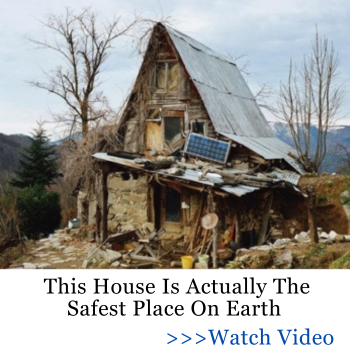Most people think bigger is better when it comes to DIY: bigger sheds, bigger gardens, more tools, more plans.
But that’s not how it used to be...
A couple generations back, people built what they needed with the little they had. Everything had a purpose, and nothing went to waste.
Turns out, simpler doesn’t mean sacrificing usefulness. In fact, some of the most practical things I’ve built came from scaling things down. Smaller, neater, easier to manage, and still every bit as effective.
These kinds of projects don’t need a workshop full of tools, or an instruction list as long as your arm.
Downsizing Advantages
Downsizing isn’t about doing less. It’s about doing what actually works for you. Here’s why scaling back can make a whole lot of sense:
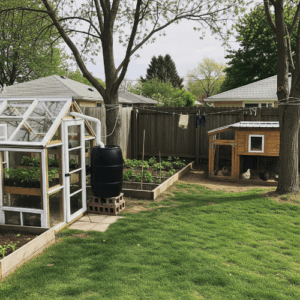
Time is tight. Between work, family, and everything else life throws at you, there’s not always room for full-blown homesteading. Smaller projects slide into your schedule without demanding all of your time.
-
Not everyone has acres to spare. Whether you’ve got a small backyard, a patch of grass, or even a balcony, compact projects let you make the most of the space you do have.
-
It’s easier on the wallet. Big setups can come with big price tags. Going smaller means fewer materials, lower costs, and less stress over the budget.
-
Less overwhelm, more follow-through. When a project feels too big, it’s easy to stall out. But something manageable? You’re far more likely to see it through and actually enjoy the process.
Mini DIY Systems
Self-reliance isn’t about going off-grid overnight. It’s about finding smart, doable ways to reduce your dependence on outside systems, right where you are. The good news? A lot of those systems can be downsized and simplified, without losing their impact.
Composting
You don’t need a huge pile or a big backyard to do it. A small compost bin, a rotating tumbler, or even a 5-gallon bucket can do the trick. With the right balance of greens and browns (think veggie scraps and dry leaves), you’ll be turning trash into soil in no time.
Solar Cooking
Cooking with the sun sounds high-tech, but it’s actually one of the oldest tricks in the book. A DIY solar oven made from a cardboard box, aluminum foil, and a bit of glass or plastic wrap can bake, cook, or reheat meals, without a bit of electricity. It’s a great project to try on a sunny afternoon, and surprisingly effective for things like baking potatoes, slow-cooking beans, or even making bread.
Greywater System
Reusing greywater is a smart way to double up on your water use. You don’t have to plumb in a whole new system either. Something as simple as running a hose from your washing machine drain into a bucket or barrel can supply water for trees, shrubs, or ornamental plants. Just be sure to use organic, plant-friendly detergents.
Seed Saving
Seed saving is one of those old homesteading habits that pays off in more ways than one. It keeps your gardening costs down, gives you more control over your food, and gradually adapts your plants to thrive in your exact soil and climate. Start with the easy ones—tomatoes, beans, peas, peppers—and build from there. A few envelopes, a marker, and a cool, dry place to store them is all you need. Come planting season, you’ll be glad you did!
DIY Clay Pot Irrigation
This ancient watering method is brilliant for small gardens or container beds. All you need is an unglazed clay pot (or two nested together with the top sealed), buried in the soil with just the neck exposed. Fill it with water, and it will slowly seep moisture into the soil around it—right at the roots where plants need it most. It cuts down water waste, prevents overwatering, and saves time.
Biogas Bucket System
A scaled-down version of a biogas digester can turn kitchen scraps into cooking fuel using a simple airtight container, some tubing, and a gas storage balloon.
DIY Solar Dehydrator
Unlike electric dehydrators, a solar dehydrator uses passive heat from the sun and airflow to dry fruits, herbs, and veggies. You can build a small one with some scrap wood, mesh trays, and a clear lid or windowpane.
Rainwater Harvesting
You don’t need a whole cistern buried in your yard to make use of rainwater. One rain barrel tucked under a downspout can catch dozens of gallons from just a single shower. That’s water you can use for your garden, houseplants, or even washing tools. All it takes is a barrel, a screen to keep debris out, and a spigot.
If you want to take it a step further, there’s a way to build a pressurized rainwater system that doesn’t rely on electricity at all. It uses gravity and smart placement to create enough pressure to run water through a hose, or even up to a second-story tap.
Dwarf Gardening
You don’t need huge rows of land to grow your own food. In fact, some of the most productive gardens I’ve seen were packed into tight spaces and still managed to feed a family. Here’s how to make a small garden pull more than its weight:
Raised Beds
If there’s one change that made my gardening life easier, it’s raised beds. They warm up quicker in the spring, drain better after a rain, and keep weeds from taking over. And a big bonus is that they also save your back. No more crouching in awkward positions for hours on end.
You can build them from scrap wood, old bricks, or even repurposed livestock troughs. And because you’re working with a smaller, defined space, it’s easier to stay on top of things. They’ll need less weeding, less watering, and you’ll have more time enjoying the harvest!
Container Gardening
You’d be surprised how much you can grow in a few well-placed containers. I’ve grown everything from peppers to potatoes in buckets and plastic tubs. The trick is using good soil, choosing compact or dwarf varieties, and remembering to water a bit more often, as containers dry out quicker than garden beds. This method shines in tight spaces like patios or balconies, and it’s especially handy if you need to move things around for sunlight or weather.
Vertical Gardening
When you’re short on ground space, think vertical. Trellises, wall planters, stacked pots, basically anything that helps you grow up instead of out. I’ve used everything from wooden pallets to chicken wire frames to guide vining plants like beans and cucumbers. It looks tidy, saves space, and can even create a little shade for heat-sensitive crops growing below. It’s also easier to harvest when everything’s right at eye level, instead of tangled on the ground.
Succession Planting
One of the biggest mistakes I made early on was planting everything at once. Come harvest time, I was drowning in lettuce and green beans, trying to preserve it all before it went bad. Succession planting fixes that. You just space out your plantings, maybe sow a row of greens every two weeks, so the harvest comes in waves instead of one overwhelming flood. It also keeps your garden beds in use longer.
Focus on High-Yield Crops
When space is limited, every square foot counts. That’s why I always reach for plants that earn their keep. Leafy greens like spinach and kale grow fast and can be harvested again and again. Herbs like basil, oregano, and thyme thrive in containers and add a lot of flavor to your meals. And bush beans? They’re compact, productive, and easy to grow. Choosing the right crops can turn even a small garden into a surprisingly abundant source of fresh food.
Grow Medicinal Herbs
Alongside your edible plants, you can also add medicinal herbs to your backyard. Many medicinal plants are compact, easy to grow, and can be turned into natural remedies that have been trusted for thousands of years. And the best part? You don’t need to wait for the right season. They can be planted any time of the year in pots or grown indoors near a sunny window. Then, once the weather warms up, you can transplant them outside to thrive in your garden.
Here’s some of my favorites – I got them from Nicole Apelian’s Medicinal Garden Kit and not a year goes by where I don’t have them in my backyard:
Calendula
Known for its bright orange flowers, it is a gentle healer for skin irritations, cuts, and burns. I use it in homemade salves and soothing creams.
Yarrow
Yarrow is a powerhouse for wound care and reducing inflammation. Its feathery leaves and clusters of tiny flowers also attract beneficial pollinators to your garden.
Chamomile
It helps ease stress, insomnia, and digestive troubles. It’s a low-maintenance plant that flowers profusely, offering a steady supply for drying and brewing.
Feverfew
Feverfew is a traditional remedy for headaches and fevers.
Echinacea
Echinacea is well known for its immune-boosting properties. It helps reduce the severity and duration of colds and flu.
Lavender
Lavender not only smells heavenly but also helps reduce anxiety and improve sleep. I like to dry its flowers and use them for sachets, teas, or infused oils.
Chicory
It is a versatile herb used for digestive health, liver support, and as a natural coffee substitute when roasted. It produces bright blue flowers and deep taproots.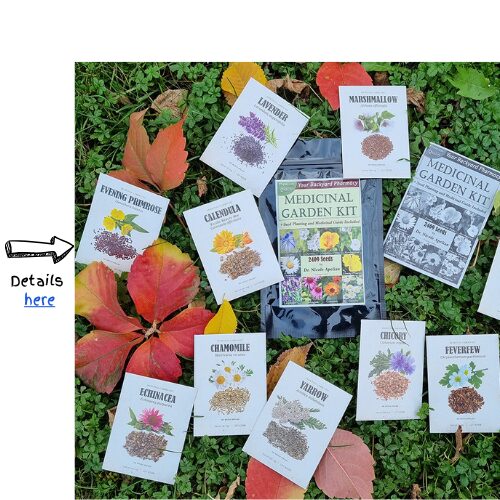
Miniature Livestock
You don’t need sprawling pastures or a barn the size of a house to raise animals. With the right breeds and a good setup, even a small backyard can provide you with fresh eggs, milk, meat, and fertilizer.
Dwarf Goats
Think of Nigerian Dwarfs or Pygmy goats as the pocket-sized powerhouses of the goat world. They’re friendly, full of personality, and surprisingly productive for their size. Nigerian Dwarfs, for example, can produce rich, creamy milk, that’s perfect for homemade cheese, soap, or simply drinking fresh. They also don’t need acres to roam: just a secure pen, a bit of pasture, and a sturdy shelter. If you’ve ever wanted dairy animals but didn’t think you had the room, these little goats might change your mind.
Chickens
A handful of hens, let’s say three or four, can keep a small household well-stocked with fresh eggs. They’ll also gobble up kitchen scraps, scratch through garden beds to control pests, and gift you with rich compost material. You don’t need a full-sized coop or a complex setup either. A small, well-ventilated compact coop will do just fine.
Rabbits
Rabbits breed quickly, grow fast, and require very little space. Many people raise them in hutches or stacked cages. Their manure is also a cold fertilizer, so you can use it directly in the garden without composting.
Quail
If chickens are the standard, quail are the compact upgrade. These tiny birds take up very little space, and you can comfortably raise a covey in something the size of a large rabbit hutch. They mature quickly (some start laying eggs as early as 6 weeks) and their eggs, though small, are rich and flavorful. They’re also quiet, perfect for urban or suburban areas. If you’re short on space or want to try an alternative poultry option, quail might surprise you.
When it comes to quail eggs vs. chicken eggs, there are a few key differences worth knowing. Quail eggs are smaller—about one-fifth the size of a chicken egg—but what they lack in size, they make up for in richness. The yolk-to-white ratio is higher, giving them a creamier texture and slightly bolder flavor.
Small-Batch Canning
Canning doesn’t have to be an all-day marathon with jars stacked to the ceiling. Small-batch canning makes it possible to put food by, without burning out in the process. Here’s how to do it when you’re short on time:
The Amish have been preserving food this way for generations. They know the value of putting up even just a few jars at a time. A handful of tomatoes, a few cups of berries, or that extra bunch of green beans from the garden can all be turned into something useful for later.
And that’s part of why they’re some of the healthiest and longest-living people around. Homegrown food, preserved the old-fashioned way, without additives or shortcuts.
If you’ve ever wondered how they make it all look so effortless, there’s a reason for that. They’ve passed down their canning methods, recipes, and food preservation tricks for hundreds of years. It’s not just about the food itself, but the way they approach it.
And for the first time ever, you can now learn everything first-hand from someone who grew up inside that world. An ex-Amish member is finally sharing the forgotten methods most people have never even heard of: the no-electricity fridge, long-lasting foods that don’t need refrigeration, the Amish parasite flush, bread-in-a-jar, and even the recipe for forever-butter. You can watch the video here and see for yourself how it all works.
Small-batch canning can easily fit into your daily life. And before you know it, your pantry will start to fill up without it ever feeling like a chore!
Start with Your Favorites
It’s tempting to try and can everything the garden throws at you, but that’s a fast track to overwhelm. Instead, focus on the foods you know you’ll actually eat. Maybe it’s a favorite jam, a reliable tomato sauce, or a handful of pickled veggies that disappear the second you crack open a jar. Sticking to what you love keeps things simple and waste-free.
Look for Small-Batch Recipes
There’s no rule that says you have to fill 20 jars at a time. Smaller recipes mean less prep, fewer ingredients, and a process that fits into an afternoon, not an entire weekend.
Freeze What You Can
Canning isn’t your only option. Freezing is fast, simple, and works wonders for many fruits and vegetables. Just wash, chop, and—depending on the food—blanch before packing into bags or containers.
Try Dehydrating
Dehydrating is another underrated method, especially if space is tight. You can dry everything, from herbs and fruit slices, to tomatoes and mushrooms. Once dried, they take up next to no room and last for months, even years. A small dehydrator is usually all you need, and in some climates, you can even air-dry certain foods the old-fashioned way.
Ferment in Small Batches
Fermenting doesn’t just preserve your food—it transforms it. Small-batch ferments take very little effort and deliver a lot of flavor. As a bonus, they’re packed with probiotics, which support gut health and digestion. You can start with just a mason jar and a bit of salt.
Embracing Simplicity
Downsizing your homesteading projects is a great way to embrace a more self-sufficient lifestyle without getting overwhelmed. By focusing on smaller, more manageable projects, you can enjoy the rewards of growing your own food, raising your own animals, and creating your own DIY systems, all while maintaining a balanced and fulfilling life. So, take a deep breath, start small, and enjoy the journey!
70 Ingenious Projects You Need To Add To Your Backyard (Video)
Better Than Concrete: DIY Cob Projects You Should Do Today

